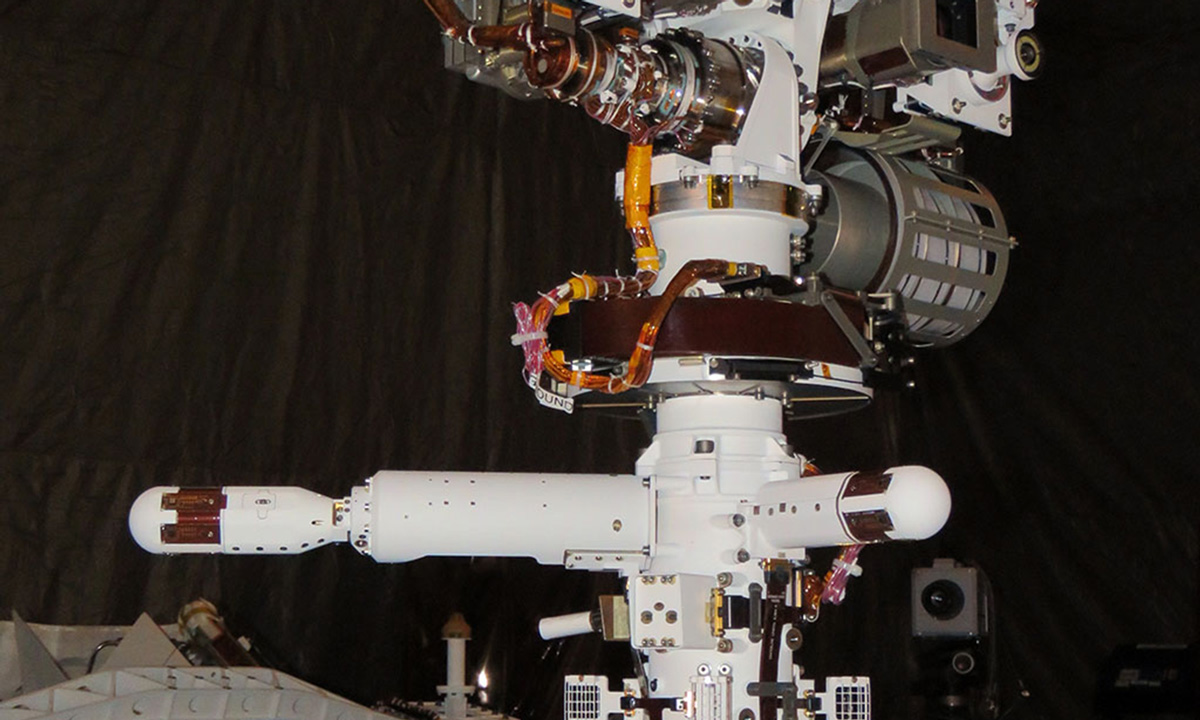
MEDA
The Mars Environmental Dynamics Analyzer is known as MEDA. It makes weather measurements including wind speed and direction, temperature and humidity, and also measures the amount and size of dust particles in the Martian atmosphere.
Tech Specs
| Main Job | To measure weather and monitor dust with sensors from the surface of Mars |
| Location | Sensors are located on the rover's mast "neck" and on the deck, front and interior of the rover's body |
| Mass | Approximately 12 pounds (5.5 kilograms) for all components |
| Power | Up to 17 watts, depending on scheduled measurements |
| Volume | Air temperature sensors: Radiation and dust sensor: Relative humidity sensor: Thermal infrared sensor: Wind sensors: Instrument control unit and pressure sensor: |
| Data Return | Approximately 11 megabytes |
"MEDA will help prepare for human exploration by providing daily weather report and information on the radiation and wind patterns on Mars."
5 Things to Know
MEDA Studies the Dusty Environment
Dust rules on Mars. It drives chemical processes on the surface and in the atmosphere. It affects temperature and weather.
MEDA Helps Predict Weather
MEDA helps astronauts know what weather conditions they'll face on Mars. Their safety depends on accurate weather predictions.
MEDA Measures Radiation
Radiation from the sun and space can alter traces of any past life in Mars rocks. MEDA helps scientists understand these changes and tells them what to look for.
MEDA Measures Water Vapor
MEDA's humidity sensor tells how water vapor is exchanged between the "soil" and atmosphere on Mars.
MEDA Shows Weather's Impact
MEDA shows how dust and weather affect the performance of NASA's Mars 2020 rover, including its cameras and MOXIE's oxygen-making system.
The Story Behind the Name
MEDA stands for Mars Environmental Dynamics Analyzer.
This simple abbreviation spells two Spanish words that can be roughly translated as "give me," as in: "MEDA! Give me the weather, dust and radiation report on Mars!"

